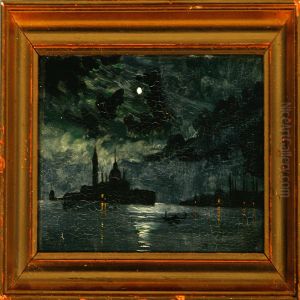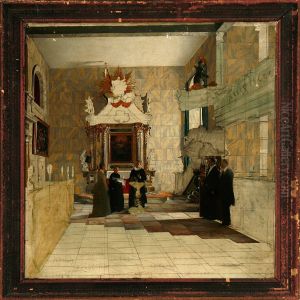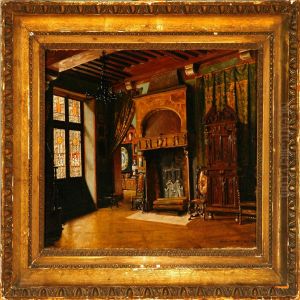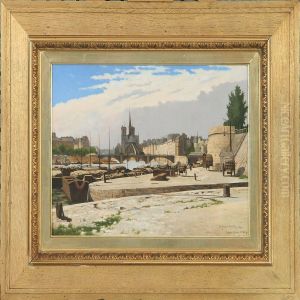Johann L. I Hansen Paintings
Johann Ludwig Heinrich Julius Hansen, known as Johann L. I. Hansen, was a Danish painter born on January 29, 1829, in Dresden, Germany. Despite his German birth, Hansen's artistic career and influence are predominantly rooted in the Danish Golden Age of painting, a period marked by a flourishing of Danish cultural life and art in the early 19th century. He is particularly noted for his contributions to historical and genre painting, embedding himself deeply into the Danish artistic tradition.
Hansen embarked on his artistic journey at the Royal Danish Academy of Fine Arts, where he studied from 1848 to 1852. This institution was pivotal in shaping the careers of many Danish artists of the time, promoting a rigorous study of both classical and contemporary art forms. After completing his education, Hansen traveled extensively throughout Europe, a common practice among artists of the era seeking inspiration and exposure to different artistic styles and cultures. His travels took him to Germany, Italy, and France, where he absorbed influences that would later permeate his work.
Throughout his career, Hansen was deeply influenced by the historical narratives and the everyday life of Denmark, which he captured with a remarkable attention to detail and a vivid portrayal of his subjects. His works often depicted scenes from Danish history and folklore, imbued with a sense of national pride and a deep appreciation for Denmark's past. Hansen's genre paintings, which portrayed scenes of everyday life, were celebrated for their warm, empathetic portrayal of Danish society and customs.
In addition to his paintings, Hansen was also involved in the decorative arts, contributing designs for the Royal Copenhagen Porcelain Factory. This aspect of his work highlights the interdisciplinary nature of the Danish Golden Age, where artists often engaged in multiple forms of artistic expression.
Johann L. I. Hansen's legacy is preserved in several Danish institutions, including the Statens Museum for Kunst (the National Gallery of Denmark) and the Hirschsprung Collection, where his works continue to be admired for their historical significance and artistic merit. He passed away on September 10, 1905, in Frederiksberg, leaving behind a body of work that continues to be celebrated for its contribution to Danish national identity and the broader history of European art.



